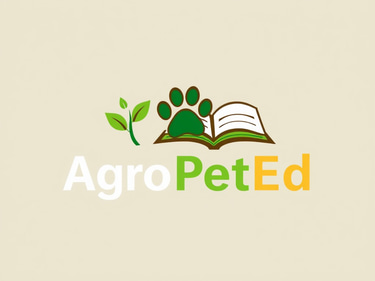
Dairy Cattle Milk Production Management
Efficient management of dairy systems is essential to achieve sustainable, profitable production while ensuring high-quality end products, animal welfare, and environmental stewardship.
ANIMAL PRODUCTION
4/28/20252 min read
Introduction
Dairy cattle milk production is one of the most important agricultural activities worldwide, serving as a vital source of food and income for millions of rural and industrial families. Efficient management of dairy systems is essential to achieve sustainable, profitable production while ensuring high-quality end products, animal welfare, and environmental stewardship.
Milk production management encompasses multiple interrelated areas, including:
Nutrition
Health management
Genetics
Reproductive management
Facility design
Milking practices
Production monitoring
Facilities and Environmental Conditions
A well-designed environment is crucial for maximizing cows' productive potential. Facilities should provide:
✅ Comfort: Clean, dry, and spacious bedding.
✅ Ventilation: Proper airflow to minimize heat stress.
✅ Accessibility: Easy access to feed, water, and healthcare.
✅ Efficient milking: Milking parlors designed to minimize time and maximize hygiene.
⚠️ Environmental stress, particularly heat, can reduce milk production by up to 30%. Thus, investing in shaded barns, fans, or cooling systems is a strategic decision.
Nutritional Management
Feed costs account for 60–70% of total production expenses in dairy systems. A balanced diet ensures not only high milk yields but also optimal composition in terms of fat, protein, and solids.
Key Ration Components
🔹 Energy: Essential for bodily functions and milk synthesis.
🔹 Protein: Critical for casein and other milk components.
🔹 Minerals & Vitamins: Calcium, phosphorus, magnesium, and vitamins A, D, and E are vital for bone health, reproduction, and immunity.
🔹 Effective fiber: Necessary to stimulate rumination and prevent digestive disorders.
📊 Best Practices:
Use ration-balancing software for precise formulations.
Conduct forage analysis to adjust diets based on production stage (prepartum, postpartum, peak lactation).
Health and Animal Welfare
Health management is a cornerstone of dairy production. Key diseases affecting performance include:
🦠 Mastitis: Udder inflammation—the leading cause of economic losses.
🦠 Brucellosis & Tuberculosis: Zoonotic diseases impacting human and animal health.
🦠 Internal/External Parasites: Reduce feed efficiency and reproductive performance.
Preventive Health Program
💉 Vaccinations: Region-specific protocols.
🐛 Strategic deworming: Timely parasite control.
🧼 Strict milking hygiene: Pre- and post-dip disinfection.
🔬 Milk quality testing: Somatic cell counts (<200,000 cells/mL) and bacteriology.
🐄 Animal Welfare: Ensuring the Five Freedoms (freedom from hunger, pain, fear, discomfort, and freedom to express natural behavior) is both an ethical obligation and a production strategy—healthy, comfortable cows produce more.
Reproduction and Genetic Improvement
Reproductive efficiency directly impacts profitability: a cow that fails to conceive on time extends her calving interval, reducing productive lifespan.
Key Aspects
🔍 Accurate estrus detection: Critical for AI programs.
🔄 Dry period management: Prepares cows for the next lactation.
🧬 Genetic selection: Breeding for milk yield, fat/protein content, longevity, and fertility.
🚀 Advanced reproductive technologies (e.g., estrus synchronization, IVF, embryo transfer) accelerate herd genetic progress.
Milking Management and Milk Quality
An optimal milking routine focuses on:
🧴 Hygiene: Udder washing, pre/post-milking teat disinfection.
🤲 Gentleness: Minimizing rough handling to avoid udder damage.
⏰ Consistency: Milking at fixed times to maintain hormonal balance.
Quality Targets
Low somatic cell counts (<200,000 cells/mL).
No bacterial contamination.
Optimal fat/protein content.
👨🔧 Training milking staff and maintaining equipment are crucial to ensuring quality and reducing industry rejections.
Production Monitoring and Economic Analysis
Precise record-keeping enables:
📌 Identifying high/low producers.
📌 Strategic culling and replacement planning.
📌 Evaluating feed efficiency and reproduction.
Key Performance Indicators (KPIs)
Liters/cow/day.
Fat/protein percentages.
Calving interval.
Cost per liter of production.
📈 Regular economic analysis identifies critical issues affecting profitability and guides corrective actions in nutrition, genetics, health, or management.
Environmental Sustainability
Modern dairy farming must adopt eco-friendly practices:
🌱 Manure management: Prevent soil/water pollution.
💧 Efficient water/energy use.
🌳 Carbon sequestration: Pastures, agroforestry, crop rotation.
📜 Sustainability certifications add market value and meet consumer demands.
Conclusions
Successful dairy production requires a holistic, multidisciplinary approach. Nutrition, health, reproduction, welfare, and business management are interconnected elements that—when coordinated—create productive, profitable, and sustainable systems.
🔮 Future success will depend on:
Continuous education.
Locally adapted technology.
Commitment to animal welfare.
Recommended Literature
NRC (National Research Council). Nutrient Requirements of Dairy Cattle, 8th Edition.
FAO. Guidelines for Good Dairy Farming Practices.
IDF (International Dairy Federation). Milk Quality Standards Manuals.
SÁNCHEZ, C. (2022). Dairy Cattle Nutrition in Tropical Climates. Agropecuaria Press.
AgroPetEd
Information about animals and agricultural practices
© 2025. All rights reserved.
